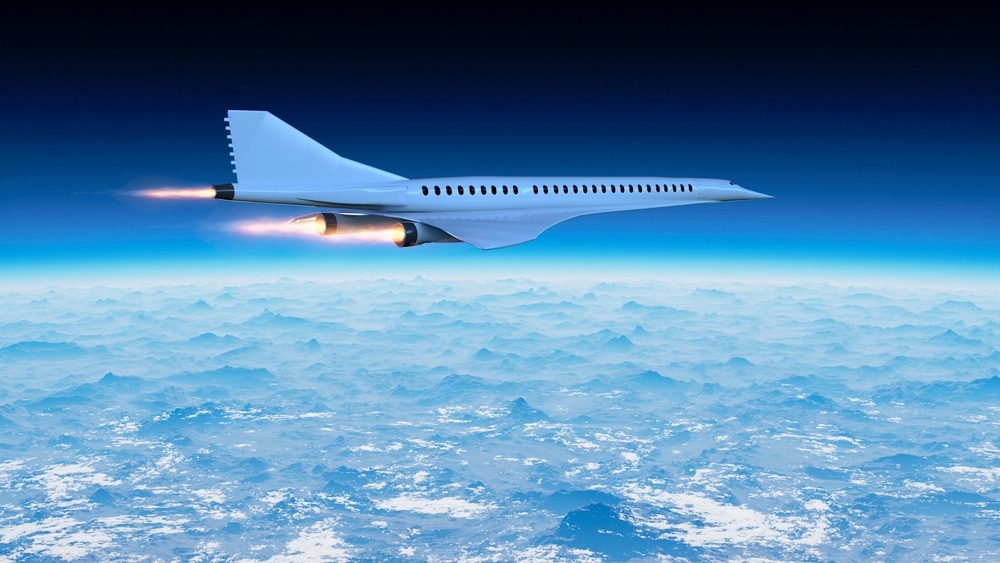A study published in Aerospace proposed a method for investigating aero-optical effects in hypersonic vehicles based on the interaction between gas molecules and photons. This method can explain energy dissipation and the optical distortion induced by aero-optical effects at the microscopic level.

Study: A New Method for Analyzing the Aero-Optical Effects of Hypersonic Vehicles Based on a Microscopic Mechanism. Image Credit: Naeblys/Shutterstock.com
Significance of Aero-Optical Effects in Hypersonic Vehicles
Hypersonic vehicles have attracted much interest because of their ability to attack rapidly. The demand for autonomous navigation systems in these vehicles is increasing.
A celestial navigation system (CNS) provides remarkable benefits over conventional navigation systems in hypersonic vehicles, including excellent anti-interference capability, non-accumulative error, and high dependability.
However, the implementation of CNSs in hypersonic vehicles is hampered by optical sensor measurement errors due to aero-optical effects. The aero-optical effect can induce angle measuring errors of up to 400 rad in high-speed dynamic environments. Understanding aero-optical effects are crucial for the hypersonic vehicles’ CNS error correction.
Aero-optical effects include the coupling of the light field and high-speed flow field. A complex flow field produced between an incoming flow and an optical head cover, along with aero-optical effects, generates transmission interference in the imaging detecting system, resulting in jittering, image displacement, blurring, and energy loss.
Limitations of Current Research on Aero-Optical Effects
Despite significant experimental advances in the study of the aero-optical effect, research on their microscopic processes has stagnated. Current research on the aero-optical effects focuses primarily on modifying the turbulent density field along the optical path.
In these studies, the ray-tracing technique examines the refractive index field close to the turbulent boundary layer (TBL) to investigate the phase distortion imposed by a high-speed flow field.
However, these studies have been unable to adequately quantify the energy loss of light transmission in turbulence since their methodologies on large-scale turbulent vortex formations’ deflection effects on light transmission were limited at the macro characteristic level.
Some researchers employed wave theory to describe aero-optical phenomena, but the amplitude change was widely overlooked, and the simple Maxwell equations were used to model light transmission in turbulence.
Studying Aero-Optical Effects Using Photon Theory
Aero-optical effects can be understood using photon theory. When a uniform gas or laminar flow is used as the study target, microscopic effects such as absorption and scattering are not visible and could be investigated directly using geometrical optics.
However, when turbulent changes become more severe, large-scale particles reach the dissipation area and transform into small-scale particles. At this time, the velocity and density of turbulence and molecule distributions in the excited and ground states vary drastically.
However, analyzing the actual aero-optical effects is impossible by merely considering the refraction effect. Therefore, photonic transmission in turbulence is needed to study the microscopic mechanism of aero-optical effects.
Analyzing Aero-Optical Effects Based on the Interaction between Photons and Gas Molecules
Researchers employed the photon transport mechanism to conduct the first-ever microscopic examination of aero-optical effects.
A microscopic mechanism-based modeling technique was designed by generating a photonic transmission model in turbulence. The photonic perspective reveals the microscopic structure of the aero-optical effects, which are based on the interaction between gas molecules and photons in a high-velocity flow environment.
The effectiveness of the proposed microanalysis on the macro scale was verified by comparing physical quantities of standard aero-optical effects with optical distortion parameters developed from the photonic perspective.
Significant Findings of the Study
The core of aero-optical effects at the microscopic level is disclosed for the first time from the viewpoint of photons by using a photonic transmission mechanism.
Current aero-optical simulation tools cannot examine energy dissipation in the transmission process. However, this research develops a simulation analysis technique to explain energy dissipation and optical distortion induced by aero-optical phenomena at the microscopic level.
The energy dissipation ratio and photon energy divergence of photons closer to the optical window are more significant, indicating that turbulent molecules absorb and disperse photons more as transmission distance increases. Photon energy divergence and energy dissipation ratio grow linearly with photon simulation threshold thickness.
Although the energy dissipation ratio is reduced, photon energy loss ratios at various places are variable, affecting the center of mass identification when computing the offset angle with the conventional method by 5.56%.
By describing the distortion features of photons in various turbulent scale structures and assessing energy in the aero-optical effects, the proposed method transcends the constraints of the conventional geometric optical methods.
Reference
Yang, B.; Yu, H.; Liu, C.; Wei, X.; Fan, Z.; Miao, J. A New Method for Analyzing the Aero-Optical Effects of Hypersonic Vehicles Based on a Microscopic Mechanism. Aerospace. https://www.mdpi.com/2226-4310/9/10/618
Disclaimer: The views expressed here are those of the author expressed in their private capacity and do not necessarily represent the views of AZoM.com Limited T/A AZoNetwork the owner and operator of this website. This disclaimer forms part of the Terms and conditions of use of this website.